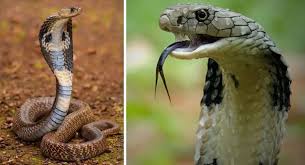Assam, India – A shocking new study has revealed that some of India’s deadliest snakes, including cobras and kraits, can still deliver venom hours after death. Until now, this phenomenon was thought to be limited to certain species such as rattlesnakes and spitting cobras.
The research, led by Susmita Thakur from Namrup College, Assam, was published in the journal Frontiers in Tropical Disease. The study documented three alarming cases in Assam where people were bitten by dead snakes and suffered severe medical complications.
Case Studies Reported in Assam
1. Beheaded Cobra Still Bites
A 45-year-old man killed a monocled cobra (Naja kaouthia) that was attacking his chickens by beheading it. When he later tried to dispose of the body, the severed head bit his thumb.
The victim experienced severe pain, vomiting, and blackening of the bite area. Doctors confirmed it was a cobra bite and treated him with antivenom and pain relief medication. After 20 days of treatment, he was discharged with follow-up care.
2. Cobra Bites Farmer Hours After Being Crushed
In another incident, a farmer accidentally ran over a monocled cobra with his tractor in a paddy field. Believing it was dead, he stepped down and was bitten on the foot.
He developed intense pain, swelling, discolouration, and vomiting. Doctors reported that despite being crushed and presumed dead for hours, the snake was still able to inject venom, requiring antivenom treatment and extended wound care.
3. Krait Delivers Venom 3 Hours After Death
In the third case, a black krait (Bungarus lividus) was killed after entering a house. Later, when a neighbour picked up the snake’s head, it bit his finger.
Within hours, the victim suffered drooping eyelids and difficulty swallowing, signs of neurotoxic envenomation. Despite receiving 20 vials of polyvalent antivenom, his condition worsened and he became quadriplegic. After 43 hours of respiratory support, his health improved, and he was discharged in good condition after six days.
Why Do Dead Snakes Still Bite?
Researchers explain that snakes’ venom delivery system remains functional even after death. The venom gland is directly connected to the hollow fang, and pressure on the gland—even accidentally—can cause venom to be released.
This means that handling a dead snake, especially its head, can trigger a venomous bite with symptoms as severe as those from a live snake.
Safety Warning
The study highlights a critical public safety warning: Never handle or touch dead snakes, particularly their heads. Even hours after death, they can deliver potentially fatal venomous bites.


